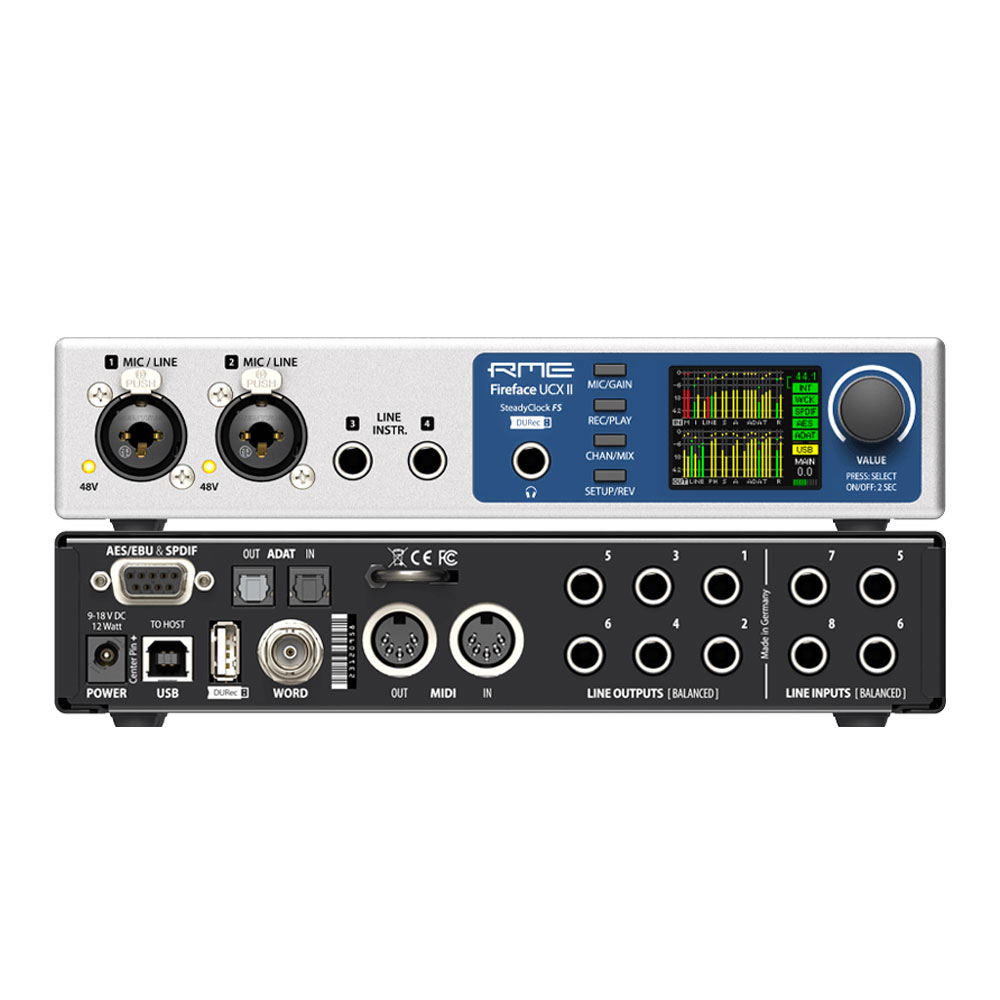RME Fireface UCX II Audio Interface
The Fireface UCX II gives you advanced USB Audio Interface and highly integrated pro audio solution. Housed in an ultra-compact format, the UCX II continues RME’s tradition of advanced yet compact interfaces. Packing what would usually be spread over two or three 19″ Panels into a half-rack-sized unit.
Capable of transferring analog and digital audio data directly to both Windows & MAC; the latest Plug and Play technology guarantees a simple installation. As well as a number of unique features including well-thought-out settings and integrated routing for quick and efficient operation.
Housing two mic/line preamps in XLR combo configuration on the front panel; along with two digitally controlled line/instrument inputs. Followed by headphone jack, various control buttons, display, and main volume knob. Then you’ve got a set of 10 analog balanced line inputs and outputs at the rear. As well as MIDI I/O, ADAT I/O, AES/EBU, and SPDFIF I/O, USB 2.0, as well as a switchable word clock I/O.
Additionally, with SteadyClock FS; the FireFace UCX II features the latest clock and jitter rejection technology from RME. Based on a femtosecond clock, SteadyClock FS means jitter is at an all-time low.
Finally, you’re able to control all device states directly from the front panel. While internal memory allows you to store six different states on the unit. Allowing it to operate fully stand-alone without a connected computer.






